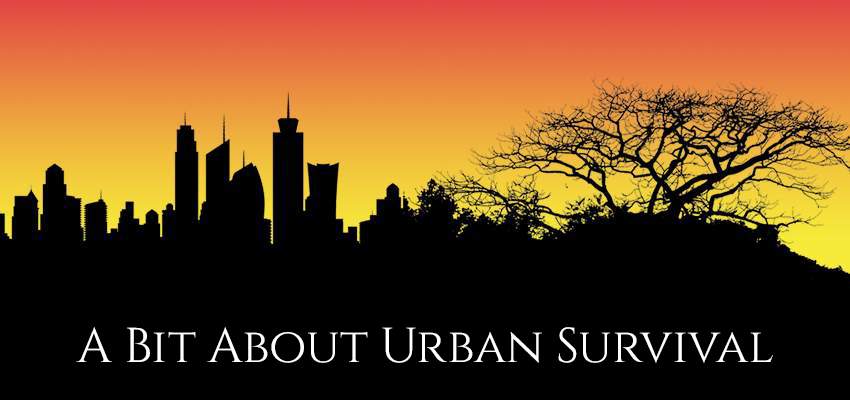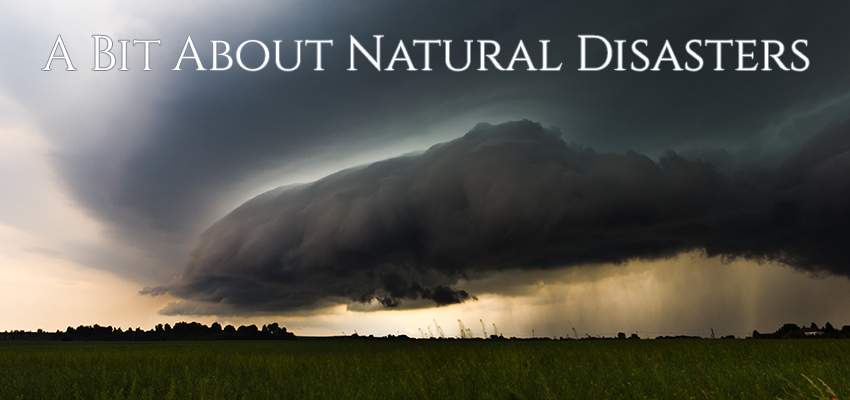
Urban emergencies arise almost every time because of reasons beyond our control, many of them Acts of God, some of them Acts by Man. Incessant rains lead to floods, houses and roads are washed away in landslides. Earthquakes can devastate a city in seconds. Even something as mundane as a power outage for a few hours might lead to urban survival situations.
Many still believe that nothing will happen to us, disasters only happen to "other people".
Far from it. We need to realise that our dependence on a "civilised world" is so intense that disaster is just waiting to happen. Electricity failure, fires, accidents have happened and might happen a lot closer to home. And we need to be prepared for these eventualities. Emergency services like hospital beds, ambulances, police, etc are stretched at the best of times and during an emergency they are likely to disappear. What will you do to be prepared for such a situation. And you need to be prepared for such emergencies in advance. As in a wilderness survival situation, there are certain essentials that you need to address to face and overcome an urban emergency.
It has been said that civilisation is only nine meals away from anarchy.
There is no point in learning to swim when the boat is sinking.
Equip your Car
You might be stuck in a massive traffic jam on your way home from work. There could have been an accident or a terrorist attack or the road could have been washed away or is flooded. You can wait in the car for some time, but eventually you will need to get into survival mode. Your vehicle can be equipped to become a survival tool. Do read up the Car Camping page in detail to see how your car can become a survival tool.
Urban Survival Essentials
A survival situation happens when you are away from your "normal" environment, having to make do with what the environment provides, improvising, thinking out-of-the-box, doing whatever is necessary to make the best possible effort in the worst possible situation. The basics are the same, whether it be wilderness or urban survival.. Remember the Rule of 3s and prepare accordingly. Stock up for 3 days or 3 weeks or 3 months. Most survival situations, wilderness or urban, should not last more than three days. But in extreme emergencies, wars for instance, you need to stock up for longer, three months is probably a good bet. Like in the wilderness, there a few emergency packs that you HAVE to consider and keep ready. These are:
1. The EDC or Every Day Carry: The EDC or Every Day Carry are tools and implements that you need to carry with you at all times so that you can get out of emergencies since you have the tools to overcome them. The EDC is not meant for major emergencies but for more mundane stuff where a simple screwdriver will be a Godsend. The EDC is a kit that can either be carried in a pocket or integrated into a belt or both. It comprises items from personal preference and cannot be standardised. But from experience, one can list a few tools that should form a part of your EDC. One convenient EDC is a Survival Bracelet that can integrate many items within it - whistle, paracord, fire starter, tinder, torch, compass, fishing kit, etc. A key chain can be a part of your EDC and can comprise a tactical pen, a pill bottle with emergency cash, nail cutter, folding scissors, carabiner, hacksaw blade, etc. The wallet can contain adhesive bandages, cotton balls, flat multitool, matchbooks, KMnO4 crystals, etc. A Swiss Knife or Swiss tool hanging from your belt will find uses almost every day in some task or the other. Being prepared is first aid for the uninjured. Draw up a list of your items that should form a part of your EDC kit and build it.
2. The Get Home Bag provides you with the bare essentials to survive the minutes and hours before you can get home from wherever you find yourself when disaster strikes. You might be in office when an earthquake hits the city. The office is evacuated, the management has done its job, and now you are on your own. The roads are broken, there is a massive gridlock, people are confused and emergency services are stretched beyond capacity. Ideally, it should be kept in your vehicle at all times. If and when the need arises, it is right there where you are. The GHB is not necessarily for major disasters and emergency situations. There are times when you could be stranded in the middle of traffic, with people and cars all around you. There is no major emergency except that the tide has come in and the roads are flooded. You cannot abandon your vehicle in the middle of the road and you know you just have to wait it out before things get back to normal. It can also come in handy when you might have had a vehicle breakdown in the middle of the night in the middle of nowhere and have to abandon it. Everyone has different needs and it is you who has to decide on the contents and make use of it when the time comes. However, suggestions for the contents of a typical Get Home Bag are water bottle, energy bars, poncho, tarp sheet, boots, bandana or shemagh, jacket, fire starter, dry tinder, Swiss Army Knife, torch, emergency/space blanket, compass, notepad and pen, paracord, whistle, etc.
3. The Grab Bag: The Grab Bag is your main survival kit. It contains the emergency tools, gear and equipment that you need to survive. It is called the Grab Bag because this is what you grab when you have to bug-out of your home quickly during an emergency and do not have the time to think. There should be separate Grab Bags for each member of the family (clearly labelled) and should be placed close to the main exit of your home. The Grab Bag should contain all the items necessary to face the basic essentials of survival - shelter construction, water purification, fire starting, signalling, navigation and first aid.
Additionally, know what to stock up in your home to face a prolonged SHTF scenario.


